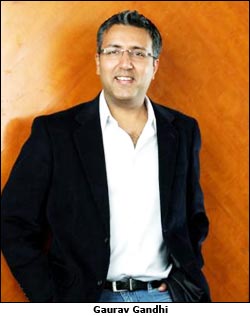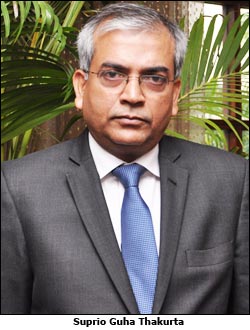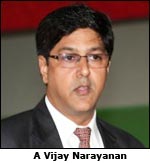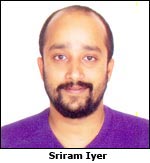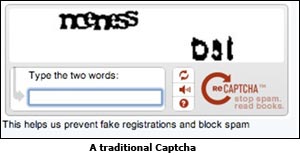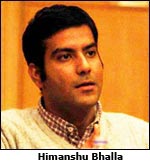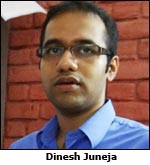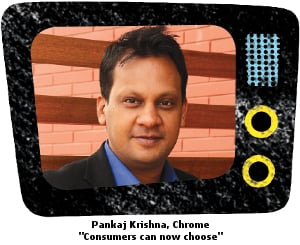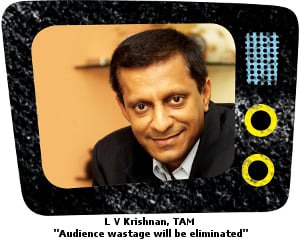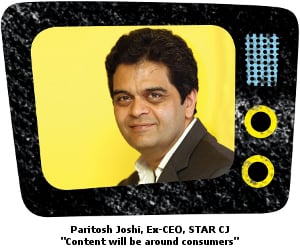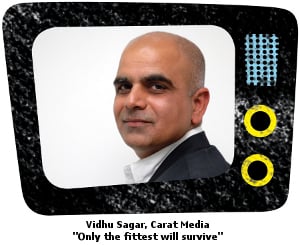Digitisation and TRAI regulations are all set to
hit the television business soon. How will it affect broadcasters and
advertisers?
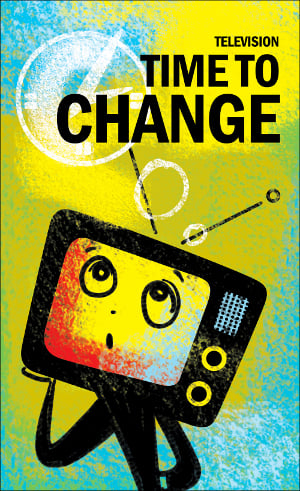
The
Indian television space, if not exactly in turbulence, is certainly
facing an upheaval. Digitisation of cable television - which has just
been postponed - is only a few months away. A TRAI (Telecom Regulatory
Authority of India) ruling some time back laid out a cap on ads shown on
a channel to 10+2 minutes (10 minutes for ads and 2 for own promos) in
an hour. Though this has been stayed by TDSAT - Telecom Disputes
Settlement & Appellate Tribunal - the debate continues to rage.
Despite being postponed once (stakeholders reacted differently - see
Points of View after Cover Story), it is almost certain that the
digitisation in the metros will happen by November 1. The rest of the
country can expect to be digitised by 2014. In what ways is this going
to impact the business?
More niches will appear
In the analog world, when a viewer switches on his TV set, she has to
invariably surf through channels to reach the final destination, which
is why the channels race to occupy a place among the first few. But the
bandwidth for prime and color bands (these enjoy extremely good
reception quality) is limited to 11 channels. Of these, Doordarshan (DD)
takes up three. The rest are taken by the biggies. For a new channel,
the next option is the S-Band or UHF band, to enter which a channel has
to pay an additional premium, also referred to as the "displacement
premium".
Generally, a broadcaster may have to shell out Rs. 65-70 crore
(source: Chrome Data Analytics & Media) for launching a new channel
with a 100 per cent HSM presence on S-band. If the new entrant wants to
be on prime band, it could have to shell out 50 per cent more. Says LV
Krishnan, CEO, TAM Media Research, "GECs find pride of place on prime
bands because of the content pull they enjoy. A viewer often scrolls
through many channels before reaching the final destination. This
results in audience wastage." Digitisation will reduce this
substantially.
Carriage costs will fall
For now, the real pain for many channels is not the lack of revenue
from advertising but the huge cost of distribution that has killed
business models. Once the analog network starts to fade and is replaced
by digital, this ‘killer' cost will disappear. As digitisation takes
over, carriage costs (money paid to cable operators) could come down by
as much as 50 per cent. This is because quality of reception will be
equally good across channels, irrespective of whether it is at No 9 or
No 99.
According to Chrome, the cost per contact (CPC) paid by a channel to
reach out to its customer is, say, Rs. 20. With digitisation, the
bandwidth capacity will rise to 500 channels, which means the CPC comes
down to one-fifth or Rs. 4. As a result, the premium paid by
broadcasters will also fall.
Viewers' choices increase
Specialised channels exist even today. But they do not get their due
because of lack of transparency and representation in viewership (owing
to sampling constraints). They are at a disadvantage in an analog
scenario where they are mostly placed on lower bands with poor reception
capacity.
"Post
digitisation, customers can choose and pay for the channel they want to
watch. This transparency will result in focused channels getting the
economic benefit which was missing," says Pankaj Krishna, founder,
Chrome Data Analytics and Media. The sampling constraints will also
become less stressful for advertiser as well as broadcaster.
Consumer behaviour is already showing signs of change in the
semi-digitised world. In Mumbai or Delhi, where 25 per cent of the
market is digitised, TAM witnessed new patterns. For instance, more
viewers are glued to genres of their choice and landing straight on
their favourite stations, while time spent on specific genres is
increasing too. TAM is now doubling its metro samples to 60 per cent.
This will help broadcasters and advertisers to not only understand
content consumption patterns but also target their programming and brand
communication well. Does this also mean that the importance of GECs
will come down?
Not really. According to experts, GECs will continue to remain the
bread and butter for established networks. This is because the main
contributors to GEC viewership are women and they will continue to
watch. In fact, with an increase in the revenue pie (through reduced
carriage fee and increased subscription), the network will begin to
spend more on its GEC content. The dogfight, if any, of the digitised
future will be between second-rung GECs and other channels.
Additionally, a channel might be in preferable packs on some
operators' menus and not-so-popular packs on others. "In the latter
case, the channel will have to micro-market in that operator's
constituency to ensure that viewers still buy the channel on the
not-so-popular pack or buy that channel a-la-carte," says Atul Phadnis,
Founder-CEO, What's-On-India.
Only the fit will survive
Interestingly, since there will be less audience wastage or
duplication and more opportunities of sampling for other genres, the
ratings of a GEC may eventually fall or stagnate. This could mean that
it will not be able to increase its ad rates much.
So,
for instance, if Star Plus, which clocks Rs. 800-1,000 crore, is unable
to move beyond its average 275-300 GRP mark, it will fail to increase
its ad rates substantially. Therefore, the network, which is heavily
dependent on Star Plus' revenues, would have to take the horizontal
growth route if it intends to shore up its overall income.
Result? There will be more opportunities to increase subscription
revenue through specialised content and channels. Not to forget GECs
will continue to enjoy their pre-eminent position since contribute 40-50
per cent of the total subscription revenues that their networks raise.
There will be a better balance in subscription too - from 80:20 ratio in
favour of advertising to a 65:35 ratio, which is also the global norm.
"Survival will depend on how fit the channel is. All 800 channels will
never be profitable together," says Vidhu Sagar, executive vice
president, Carat Media India.
Channels will become brands
With the increase in the availability of more channels that work on a
more focused domain, TV channels will eventually have to emerge as a
brand, supported by a definitive proposition. This means that a Satyamev
Jayate and a Star Plus will not be able to stand as two different
products with individual propositions but rather, quite like an FMCG, as
one singular entity with a broader unique offering. As channels emerge
as brands, the methods of marketing will have to change. Marketing today
ensures that the distribution, content, on-air promos, are in sync.
Now, it will become more defined and grow on the costs saved on
distribution. Which means that if there are 10-20 people in the
distribution department of a channel, some could be shifted to
marketing.
Marketing
for the brand will also become more important because of a TRAI clause.
According to the Authority, all channels will be available at an a la
carte price which will be much lower than before. Marketing will have to
become profile-led and centered on focused geographies, than being
GRP-heavy. In analog, second rung channels could push themselves by
paying off the cable operator. In the changed circumstances, these
channels can get in only if the household wants them in or go free to
air. So the brand becomes critical, its familiarity becomes critical and
its image and reputation become critical. "Brand managers will have to
take the driver's seat. Consumers will be studied, understood and
content built around them. Today, content is created first and then
promoted across the targeted audience group," says Paritosh Joshi,
ex-CEO, Star CJ.
Ad rates will be affected
The biggest hurdle facing advertisers is the proposed
12-minutes-in-an-hour cap on ads. This will push up ad rates because
there are few shows or channels that command high ratings. So earlier,
if a channel was selling 100 spots for Rs. 10 each and made Rs. 1,000,
it would now have to sell 50 spots at Rs. 20 to match that. The viewer
is happy too. Not everyone agrees it is so simple.
"If
there is near perfect competition then it will be difficult even for a
GEC to increase rates as someone else will blink. But if there is a
relative gap between players, then the top channels will be able to hike
rates at the expense of smaller channels," says L S Krishnan, thought
leader, Amagi.
Meanwhile, the frequencies could also even out the process. If, for
example, an advertiser is operating on a 60:8 reach and frequency ratio
(wherein the brand is reaching out to 60 per cent of the audience with
each viewer getting exposed to the brand's ad eight times in that
period), market forces could force the channel to reduce the exposure to
four or even less.
A hike in ad rates could eliminate the non-serious advertiser - there
are Hindi national news channels that operate at an effective rate of
Rs. 250 for a 10-second spot. But many believe that local brands such as
pan masalas, cement or innerwear having ‘tasted blood' will continue to
stay, even if rates go up.
Advertisers will Innovate
The changed circumstances will force advertisers to innovate. Ad
creatives could also undergo change in more ways than one. Most of the
ads that come out range from a 1 minute version to 30 seconds or 20
seconds. The mandate could change to a 30, 20, 10 and even a 5. But here
is the dig. TRAI regulations suggest that ads have to be full screen.
Part-screen and drop down ad will not be permitted. So, innovations will
also be under pressure.
Indian advertisers could do an Apple here. When the iPad hit stores
in April 2010, it was heavily marketed. Just three days before D-day,
iPad was the star of the 19th episode of ABC TV's Modern Family. It was a
key part of the plot as the family tried to buy the father an iPad for
his birthday, which coincided with the device's launch day.
Digitisation will bring in value-added services such as VOD and
broadband. Experts foresee that television will, over time, be less sold
in slots and more as a part of programming, across media. Content
properties will also have footprints across TV, YouTube, Facebook and
other media such as radio. Convergence will become the route to sell. It
will now be TV+digital+mobile+social media.
Says Mahesh Murthy, CEO, Pinstorm, "MTV Roadies manages a TVR of 0.4
or less. That means it's seen, at its peak, in 4.5 lakh homes. Assuming
one teenager a home, that's a peak viewership of less than five lakh.
But the same show has 10 times the fan base on its FB page. On the
revenue front though, it's 99 per cent TV and 1 per cent online. This
dichotomy will make less sense for advertiser and consumer in the years
ahead."
Coming back to the beginning, the tremors that are about to hit
television in India could do more good than bad. Watch this space.
Source-: afaqs.com

